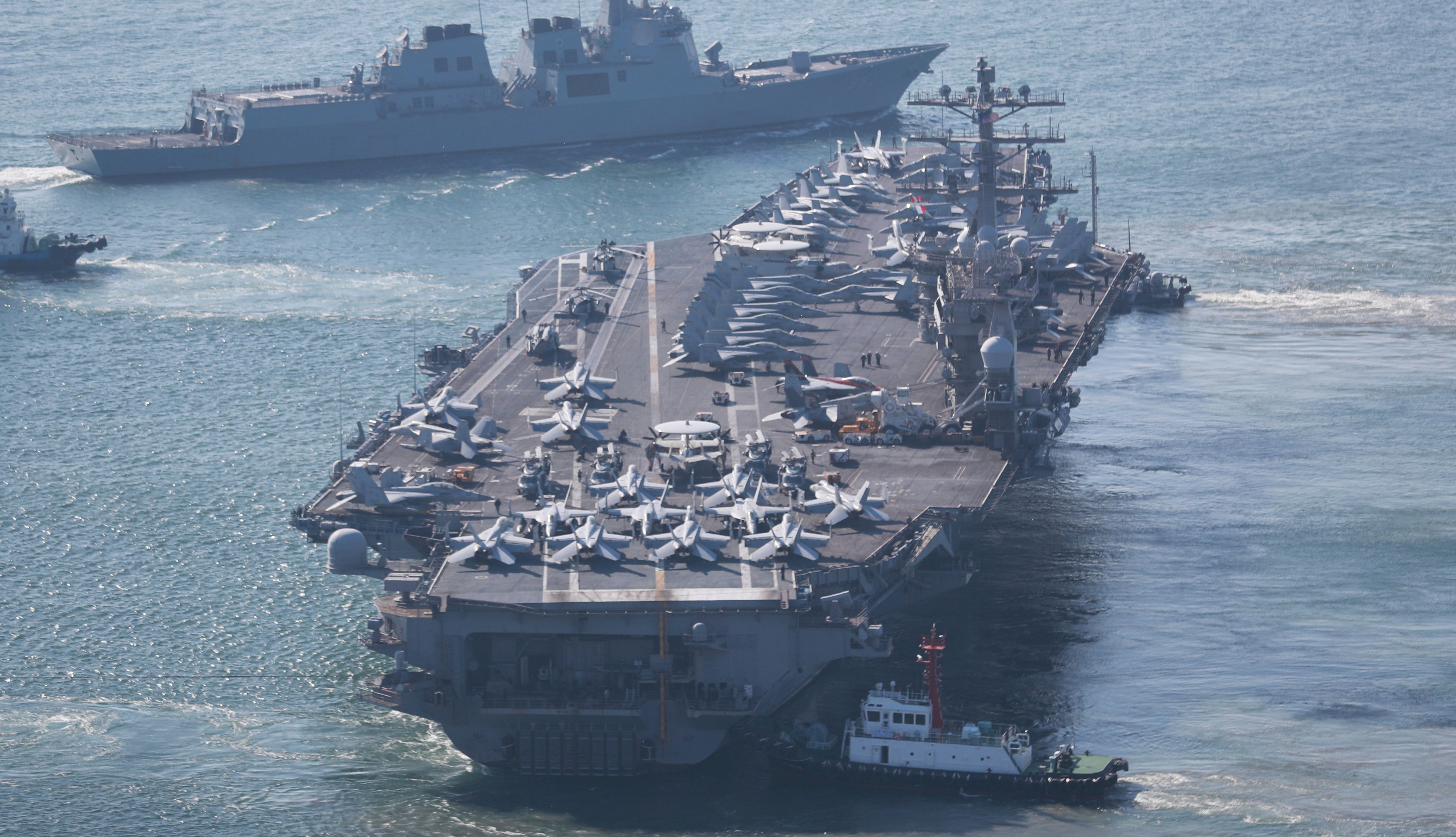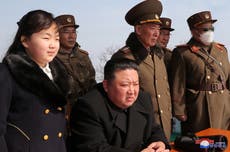US, South Korea, Japan begin anti-submarine drills ‘against North Korea’s growing underwater threats’
Two-day drill being held in international waters of the southern island of Jeju

Your support helps us to tell the story
From reproductive rights to climate change to Big Tech, The Independent is on the ground when the story is developing. Whether it's investigating the financials of Elon Musk's pro-Trump PAC or producing our latest documentary, 'The A Word', which shines a light on the American women fighting for reproductive rights, we know how important it is to parse out the facts from the messaging.
At such a critical moment in US history, we need reporters on the ground. Your donation allows us to keep sending journalists to speak to both sides of the story.
The Independent is trusted by Americans across the entire political spectrum. And unlike many other quality news outlets, we choose not to lock Americans out of our reporting and analysis with paywalls. We believe quality journalism should be available to everyone, paid for by those who can afford it.
Your support makes all the difference.The South Korean, US and Japanese navies began their first anti-submarine drills in six months on Monday in a bid to counter the growing threat from North Korea.
The two-day drill, staged in international waters of the southern island of Jeju at the Korean peninsula, comes as Pyongyang’s recent unveiling of a type of battlefield nuclear warhead prompted worries the country may conduct its first nuclear test since 2017.
The drill also involves a US carrier strike group led by USS Nimitz, which arrived in the southeastern city of Busan last week. It also includes Naval destroyers from South Korea, the US and Japan, said Seoul’s defense ministry in a statement.
The training seeks to improve the three countries’ capacities to respond to underwater security threats posed by North Korea’s advancing submarine-launched ballistic missiles and other assets, the statement said.
The exercises will use a mobile anti-submarine warfare training target to improve the capabilities needed to detect, track and destroy North Korean underwater threats, the ministry said.
The three countries last held trilateral anti-submarine drills in September last year for the first time in five years amid tension over North Korea’s unprecedented number of missile tests.
Submarine-launched missiles by North Korea are serious security threats to the US and its allies because it’s harder to spot such launches in advance. In recent years, the North has been testing sophisticated underwater-launched ballistic missiles and pushing to build bigger submarines, including a nuclear-powered one.
Last month, North Korea performed a barrage of missile tests in response to the earlier South Korea-US bilateral military drills. The weapons tested included a nuclear-capable underwater drone and a submarine-launched cruise missile, which suggest North Korea is trying to diversify its kinds of underwater weapons.
Photographs in North Korea’s state media last week showed about 10 capsule-shaped, red-tipped warheads called “Hwasan (volcano)-31”, with different serial numbers. A poster on a nearby wall listed eight kinds of short-range weapons that can carry the “Hwasan-31” warhead.
The previous test flights of those weapons showed them to be capable of striking key targets in South Korea, including US military bases there.
Some observers said the warhead’s unveiling may be a prelude to a nuclear test as North Korea’s last two tests in 2016 and 2017 followed the disclosures of other warheads. If it does conduct a nuclear test, it would be its seventh detonation overall and the first since September 2017.
Foreign experts have debated whether North Korea has functioning nuclear-armed missiles. But South Korea’s defense minister, Lee Jong-Sup, recently said the North’s technology of miniaturised warheads that can be mounted on advanced short-range missiles may have made considerable progress.
North Korea could carry out new missile tests in response to the South Korea-US-Japan drills because it views such training as a security threat. North Korean leader Kim Jong-un called recent South Korea-US exercises “reckless military provocations” that disregarded North Korea’s “patience and warning”.
Additional reporting by agencies





Join our commenting forum
Join thought-provoking conversations, follow other Independent readers and see their replies
Comments